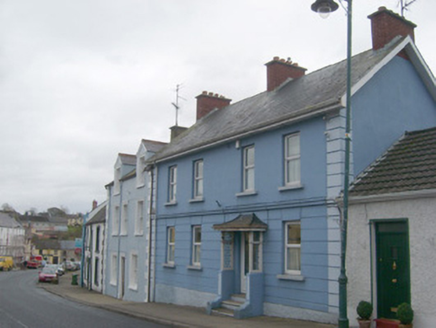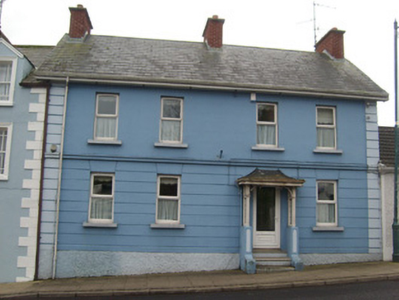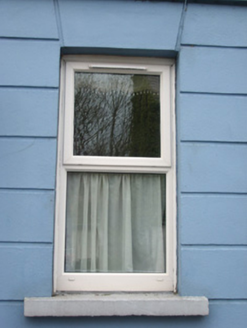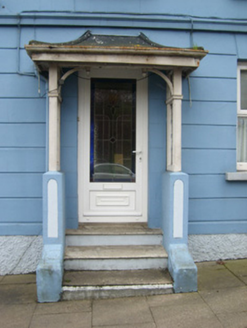Survey Data
Reg No
40850027
Rating
Regional
Categories of Special Interest
Architectural, Historical, Social
Original Use
House
In Use As
House
Date
1840 - 1870
Coordinates
210797, 366739
Date Recorded
31/10/2007
Date Updated
--/--/--
Description
Attached four-bay two-storey house, built or rebuilt c. 1860, having projecting single-bay single-storey open timber-frame porch to the main elevation. Formerly in use as a constabulary barracks c. 1880 - 1922. Possibly originally two separate buildings later amalgamated to form a single property. Now in use as a private dwelling. Pitched artificial slate roof with overhanging eaves, and three red brick chimneystacks (one to either gable end and one offset to the west side of centre). Hipped felt roof to porch. Smooth rendered ruled-and-lined walls at first floor level with smooth rendered horizontal channelled walls at ground floor level, separated by moulded stringcourse. Render block/channelled quoins to corners at first floor level pebbledashed/roughcast plinth course. Square-headed window openings with painted sills and replacement windows. Square-headed door opening having replacement door. Open porch to the front elevation comprising render base with moulded timber structure over having leaded glass panels to side elevations (north-east and south-west). Concrete steps to front. Road-fronted to the west of Pettigoe town centre.
Appraisal
This substantial building retains much of its early form and character. However, its integrity has been diminished by the loss of salient fabric to the openings and the replacement of the slate roof. The front elevation is enlivened by the differing render treatment at first floor and ground floor levels, and by the render stringcourse and the render quoins. This building is primarily of historical interest as a former Royal Irish Constabulary barracks. A James Herron was the main constable here in 1881, and a Sergeant Edward Dunne in 1894 (Slater’s Directory). This barracks was attacked and taken over by the IRA, under the command of Commandant P. Breen, in 1921 during the War of Independence. This building is a modest addition to the built heritage of Pettigoe and is of historical and social interest to the local area on account of its past function. Sensitively restored, this building would make a positive contribution to the streetscape to the west of the town centre.







